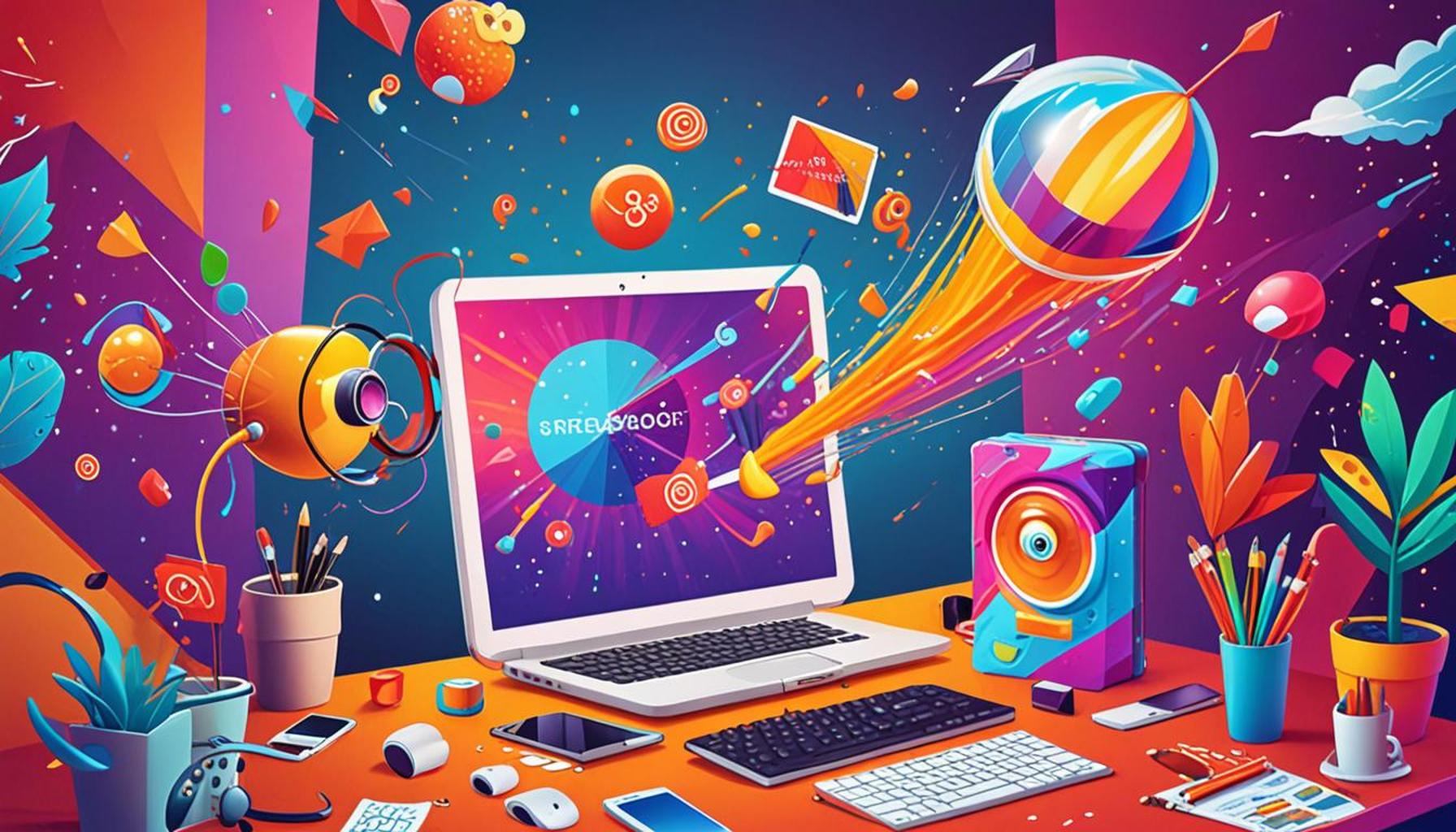The Influence of Promotion Policies on the Effectiveness of Digital Marketing Campaigns

Understanding the Dynamics of Promotion Policies in Digital Marketing
The intricate framework of promotion policies significantly influences the trajectory of digital marketing efforts today. By establishing how brands communicate and engage with their consumer base, these policies directly impact the success of marketing initiatives. To harness the power of these policies effectively, a deep understanding of their components is essential. This knowledge can lead to the optimization of marketing strategies in a competitive digital environment.
Target Audience Specifications are a fundamental element of promotion policies. Identifying the right demographic to receive marketing messages can decisively affect campaign outcomes. For instance, a luxury brand promoting high-end watches would tailor its marketing materials to attract affluent consumers aged 30-55, possibly utilizing platforms like Instagram or Pinterest, which have a higher concentration of this demographic. By focusing on specific segments—be it millennials, Gen Z, or families—brands can ensure more personalized engagement, which enhances the chances of conversion.
Another critical aspect is Incentive Structures, which play a pivotal role in customer decision-making. Attractive offers such as seasonal discounts, promotional bundles, or exclusive access to limited-time products can significantly boost both traffic and conversion rates. For example, during the Back-to-School season, retailers often implement promotions that combine discounts on school supplies with loyalty points, creating a win-win scenario for both the brand and the consumers.
Additionally, adherence to Compliance Regulations is essential for maintaining credibility and avoiding costly penalties in digital marketing efforts. Regulations like the CAN-SPAM Act and the General Data Protection Regulation (GDPR) in Europe underscore the importance of transparency and consumer consent in marketing practices. For brands in the United States, understanding these compliance issues not only fosters trust but also builds a sustainable long-term relationship with consumers.
Furthermore, conventional promotional tactics such as discounts, limited-time offers, and loyalty programs serve as instrumental tools for driving customer behavior. In recent times, campaigns like “Buy One, Get One Free” have shown to significantly increase sales volume, while customer loyalty programs encourage repeat purchases by rewarding customers for their continued patronage.
The rapidly evolving landscape of digital marketing necessitates that companies remain agile. Continuous analysis of market trends and active solicitation of customer feedback empowers brands to refine their promotional strategies dynamically. This adaptability ensures businesses are not only relevant but also resonate with their target audiences, driving deeper engagement.
As we delve further into the complexities of promotion policies, it becomes evident that these strategies do more than impact a company’s financial outcomes; they shape how consumers perceive brands in an increasingly digital marketplace. This alignment of brand perception with consumer expectations often determines overall engagement levels, reinforcing the need for well-structured promotional policies.
SEE ALSO: Click here to read another article
Targeting Strategies: Maximizing Promotional Impact
Central to the success of any digital marketing campaign is the concept of targeting strategies. Businesses must not only identify who their customers are but also understand what drives their purchasing decisions. A well-defined targeting strategy allows brands to allocate their promotional resources effectively, ensuring that marketing messages resonate with the right audience. According to a report by the American Marketing Association, targeted campaigns can lead to a an increase in conversion rates by up to 30%.
To implement effective targeting, brands should consider several key factors:
- Demographics: This includes age, gender, income level, and location. Tailoring promotional content to cater to these specifics can significantly enhance audience affinity.
- Consumer Behavior: Understanding how potential customers engage with digital content—whether through social media, email, or websites—allows brands to choose the most effective promotional platforms.
- Psychographics: These insights encompass interests, values, and lifestyle choices, enabling brands to craft messages that not only appeal to their target segments but also foster emotional connections.
Furthermore, the integration of data analytics and market research can refine targeting strategies exponentially. Employing tools like Google Analytics and social listening platforms grants brands access to invaluable information about their audience’s preferences and behaviors. For instance, a fashion retailer can analyze social media interactions to determine the latest trends among its audience, allowing them to pivot their promotional tactics swiftly.
However, it is vital to remember that the effectiveness of promotion policies is not solely defined by who you are targeting but also how you engage them. Message clarity and relevance are paramount. A promotional campaign that articulates a compelling value proposition and aligns with customer expectations often sees enhanced engagement levels. For example, when companies like Nike launch campaigns that celebrate individuality and inclusivity, they effectively tap into the aspirations of diverse audience segments, reinforcing the brand’s relevance.
The realm of social media has further transformed traditional promotional tactics. Platforms such as Facebook and Instagram offer unique advertising capabilities, allowing brands to implement targeted promotions with precision. Tools such as retargeting enable brands to reach potential customers who have previously interacted with their website or social media, reminding them of products they showed interest in, thus increasing the likelihood of conversion.
Moreover, the impact of influencer partnerships cannot be overlooked. Collaborations with influencers who mirror the brand’s values and appeal to its target demographics can boost both credibility and reach. For instance, beauty brands partnering with popular makeup gurus on YouTube or Instagram can tap into their followers’ trust, leading to effective promotional outcomes. This demonstrates the complex interplay between promotion policies and the effectiveness of digital marketing campaigns, highlighting the need for brands to be strategic in their collaborations.
| Category | Key Features |
|---|---|
| Targeted Promotions | Utilization of data analytics for custom-tailored marketing strategies. |
| Scalable Ad Strategies | Flexibility to adjust campaigns based on performance metrics enhances advertising efficacy. |
The effectiveness of digital marketing campaigns is heavily influenced by various promotion policies. By employing targeted promotions, businesses can analyze consumer data to tailor their marketing efforts to specific demographics. This customization often leads to higher engagement levels and conversion rates, as messages resonate more with the audience’s preferences.Additionally, the implementation of scalable ad strategies allows digital marketers to adapt their campaigns dynamically. As they track performance metrics in real-time, this adaptability proves essential; marketers can enhance their campaigns to optimize budget allocation and maximize ROI. These policies not only facilitate better customer engagement but also ensure that businesses stay competitive in an ever-evolving digital landscape. Understanding these dynamics enables organizations to refine their approaches to achieve superior outcomes in their digital marketing endeavors. Dive deeper into exploring how these strategies can be effectively amalgamated into your marketing framework.
SEE ALSO: Click here to read another article
The Role of Timing and Frequency in Promotion Strategies
In addition to well-crafted targeting strategies, timing and frequency are critical components that can dramatically influence the effectiveness of digital marketing campaigns. The digital landscape is continuously evolving, and understanding when to deliver promotional content can significantly enhance engagement and conversion rates. According to HubSpot’s research, emails sent at the right time can yield response rates as high as 50% higher compared to poorly timed messages.
Brands must analyze their audience’s online behavior to optimize timing. Factors such as time zones, peak online hours, and seasonal trends play a vital role in determining when to launch specific promotions. For instance, retail brands often maximize their promotional efforts during major shopping periods like the holiday season, using countdown campaigns and limited-time offers to create a sense of urgency.
Frequency also significantly affects audience reception. Bombarding potential customers with excessive promotional content can lead to fatigue and disengagement. A delicate balance must be struck—too little communication may lead to missed opportunities, while too much can drive audiences away. According to a study from Campaign Monitor, brands that carefully schedule their email marketing efforts can achieve open rates of around 18% to 20%, compared to a mere 6% to 8% when messages are poorly timed or overly frequent.
The Power of A/B Testing in Promotion Effectiveness
A/B testing serves as an invaluable tool for brands looking to refine their promotional tactics and enhance overall campaign performance. By comparing two versions of a promotional message—whether it’s different CTAs, price points, or visuals—marketers can identify which variation generates the most engagement. This iterative process empowers brands to make data-driven decisions, ultimately honing in on the most effective promotional strategies tailored to their audience. A report by Invesp indicates that companies that extensively utilize A/B testing can see conversion rate improvements of up to 49%!
Moreover, A/B testing allows brands to explore different promotional platforms, examining how customer behaviors differ across channels. For instance, an advertisement may perform exceptionally well on Instagram, yet fall short on Google Ads. This insight reveals not only the effectiveness of specific promotions but highlights the unique characteristics and preferences of distinct channels.
Leveraging User-Generated Content in Promotions
The advent of social media has propelled user-generated content (UGC) into the forefront of effective promotion policies. Consumers are increasingly influenced by the experiences of their peers, making authentic testimonials and reviews more impactful than traditional advertisements. Brands that encourage customers to share their experiences—whether it be through hashtags, designated social media campaigns, or incentivized contests—can harness the power of UGC to create a community atmosphere around their products.
According to a survey conducted by TurnTo Networks, 79% of consumers said user-generated content highly impacts their purchasing decisions. Thus, integrating UGC within promotional strategies can not only enhance brand credibility but also create organic engagement. Levi’s, for instance, successfully employed UGC in their promotional campaigns by encouraging customers to post images with hashtags, capturing the attention of a broader audience while emphasizing real lifestyle stories over polished branding.
In essence, as brands navigate the complexities of digital marketing campaigns, promotion policies play a pivotal role in shaping effectiveness. Through strategic targeting, thoughtful timing, frequency, A/B testing, and leveraging customer influence, businesses can optimize their promotional efforts and drive significant ROI in a crowded digital marketplace.
ADDITIONAL INSIGHTS: Expand your understanding here
Conclusion: The Strategic Significance of Promotion Policies
In conclusion, the influence of promotion policies on the effectiveness of digital marketing campaigns cannot be overstated. As the digital marketing landscape grows more competitive, brands must adopt a holistic approach that encompasses well-timed promotions, strategic frequency, data-driven decision-making through A/B testing, and the vast potential of user-generated content (UGC). Each of these elements plays a crucial role in not only enhancing brand visibility but also fostering strong consumer relationships.
With precise targeting and an understanding of consumer behavior, companies can optimize their promotional strategies to reach the right audience at the right moment, capitalizing on high engagement windows. The significant variances seen in open and response rates strongly suggest that timing and frequency are not mere details but essential components that can make or break a campaign.
Furthermore, as A/B testing reveals insights about audience preferences and channel effectiveness, brands can refine their promotional tactics based on empirical data, ensuring every communication hits the mark. And with the rising importance of social proof, integrating UGC within campaigns has emerged as a powerful tactic to boost trust and engagement in an era where consumers are increasingly skeptical of traditional advertising.
Ultimately, the synergy between these promotional strategies forms the bedrock of effective digital marketing campaigns. As brands continue to adapt to the dynamic online environment, prioritizing thoughtful promotion policies will not only enhance their marketing effectiveness but also empower them to build lasting connections with their audience. For marketers, the journey does not end with understanding these policies—it’s about continuously innovating and measuring outcomes to stay ahead of the curve in this ever-evolving digital realm.



